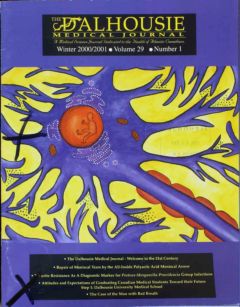Tellurite resistance as a diagnostic marker for Proteus-Morganella-Providencia group infections
DOI:
https://doi.org/10.15273/dmj.Vol29No1.4313Abstract
The Proteus-Morganella-Providencia group of bacteria includes a number of important human opportunistic pathogens. The extent of tellurite resistance phenotype among the PMP bacteria was investigated. Additionally, preliminary investigation was conducted into the potential use of screening for tellurite resistance as a rapid and efficient diagnostic test for the infections caused by the PMP bacteria. Twenty-two clinical isolates of Morganella and Providencia displayed both low and high levels of potassium tellurite resistance, suggesting that the tellurite resistance phenotype is an integral feature of the PMP bacterial group. DNA sequences similar to the ter locus of P. mirabilis were identified by Southern blot hybridization in seven of these clinical isolates, which also displayed high level of tellurite resistance. It is hypothesized that at least three distinct Te systems, including that homologous to the ter locus, mediate tellurite resistance in the PMP bacteria. Based on the variable tellurite resistance levels and implied diversity of the underlying genetic determinants, routine screening for tellurite resistance appears to be an unsuitable basis for an informative diagnostic test of the PMP infections.Downloads
How to Cite
Toptchieva, A., & Hoffman, P. S. (2001). Tellurite resistance as a diagnostic marker for Proteus-Morganella-Providencia group infections. DALHOUSIE MEDICAL JOURNAL, 29(1). https://doi.org/10.15273/dmj.Vol29No1.4313
Issue
Section
Original Research
License
Authors who publish with this journal agree to the following terms:
- Authors retain copyright and grant the journal right of first publication with the work simultaneously licensed under a Creative Commons Attribution License that allows others to share the work with an acknowledgement of the work's authorship and initial publication in this journal.
- Authors are able to enter into separate, additional contractual arrangements for the non-exclusive distribution of the journal's published version of the work (e.g., post it to an institutional repository or publish it in a book), with an acknowledgement of its initial publication in this journal.
- Authors are permitted and encouraged to post their work online (e.g., in institutional repositories or on their website) prior to and during the submission process, as it can lead to productive exchanges, as well as earlier and greater citation of published work (See The Effect of Open Access).


